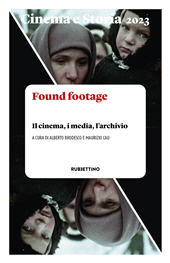Found footage televisivo : archivi, usi e (nuove) estetiche
P. 187-207
Il contributo esplora le strategie d'uso dell'archivio televisivo. A partire dalla costituzione e implementazione degli archivi Rai e Mediaset e dei più lacunosi archivi di altri player televisivi, si riflette sul riuso che il medium stesso ha fatto del suo repertorio, in termini di funzioni narrative e scelte estetiche. Due casi studio sono stati scelti per il loro carattere di rottura delle convenzioni d'uso dell'archivio televisivo: il docureality storico Il collegio (Rai 2, 2017-in corso) e la serie biografica Wanna (Netflix, 2022). L'analisi mostra come le immagini siano state inserite in una nuova cornice narrativa e si interroga sui modi in cui il pubblico potrebbe interagire con esse. Come ha annotato John Ellis, la televisione del passato si presenta come strana e familiare, nostalgica e imbarazzante allo stesso tempo. Queste pagine provano a mostrare perché. [Testo dell'editore]
The essay explores the use of archive material for television. Starting from the creation of the public service archive and other private television archives, the found footage within traditional television programs is investigated in terms of narrative functions and aesthetic choices. Two case studies have been picked due to their unconventional use of the archive material: Il collegio (Rai 2, 2017-in production), a historical reality docuseries, and Wanna (Netflix, 2022), a biographical four-part documentary. The analysis re-inscribes the found footage into new narrative contexts and reflects on the expected viewers' interactions with it. As John Ellis points out, the television of past time appears to be strange and familiar, nostalgic and awkward at the same time. This contribution tries to understand why it happens. [Publisher's text]
-
Artículos del mismo número (disponibles individualmente)
-
Información
Código DOI: 10.1400/293613
ISSN: 2283-9852


